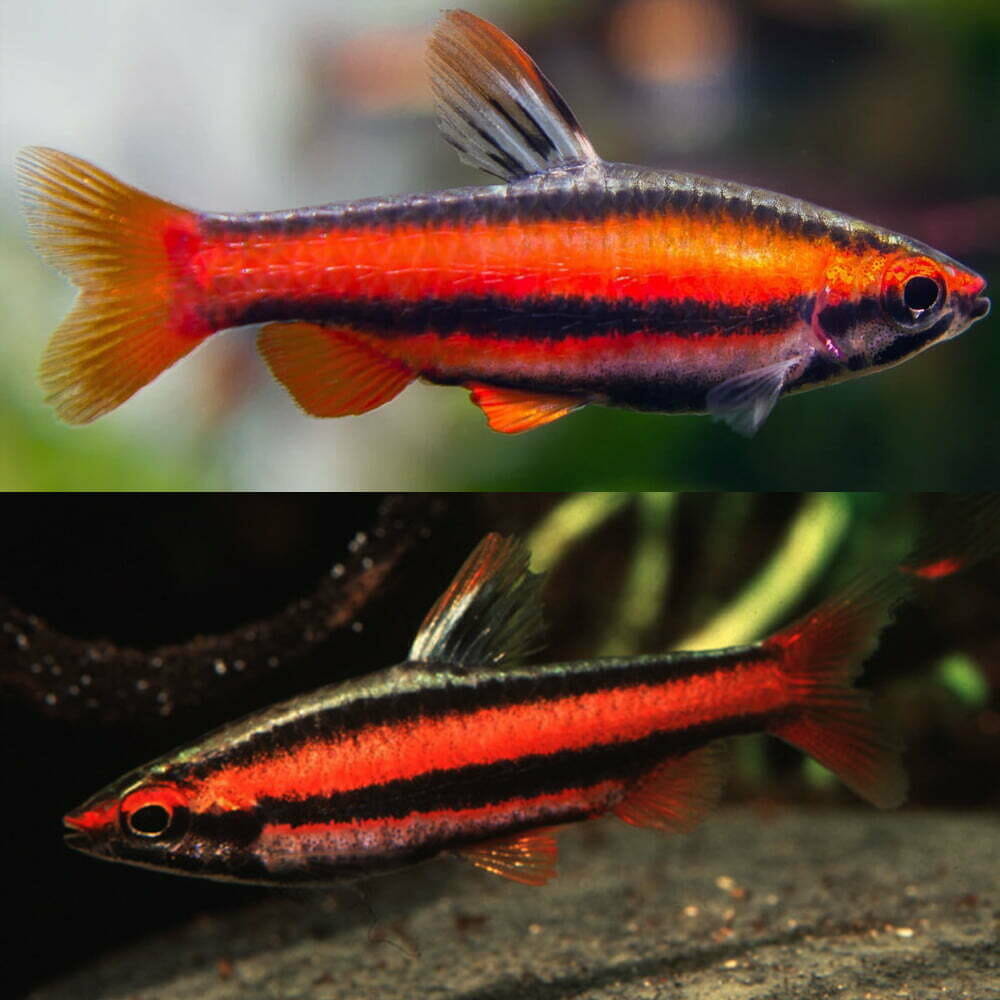Pencilfish - Red (Nannostomus mortenthaleri) "Rare"
Pencilfish - Red (Nannostomus mortenthaleri) "Rare"
Couldn't load pickup availability
Maximum Standard Length
25 – 30 mm.
Aquarium Size
Base dimensions of at least 90 ∗ 30 cm or equivalent are necessary if you wish to keep a mixed-sex group since males can be particularly aggressive towards one another (see ‘Behaviour and Compatibility’).
Maintenance
Should ideally be kept in a heavily-planted set-up, preferably with a dark substrate.
The broken lines of sight that exist in such a display allow it to display natural behaviour as well as helping to reduce skittishness and offering refuges for sub-dominant individuals.Floating plants are a useful addition as are driftwood branches and dried leaf litter, the latter in particular driving establishment of microbe colonies as decomposition occurs.
Such microorganisms can provide a valuable secondary food source for fry, whilst the tannins and other chemicals released by the decaying leaves are also thought beneficial.
Use gentle filtration; an air-powered sponge-style unit should prove adequate in most cases.
This species requires stable water conditions and should never be added to an immature aquarium.
Water Conditions
Temperature: 24 – 28 °C
pH: 4.0 – 7.0
Hardness: 18 – 90 ppm
Diet
A micropredator feeding on tiny invertebrates and other zooplankton in nature.
In the aquarium it will accept dried foods of a suitable size but should also be offered daily meals of small live and frozen fare such as Artemia nauplii, Moina, grindal worm, etc.
Behaviour and Compatibility
Peaceful with other species but does not make an ideal community fish due to its small size and rather timid nature.
Ideally it should be maintained alone or at most with diminutive, non-aggressive characids and smaller callichthyid or loricariid catfishes.It also makes an ideal dither fish for Apistogramma spp. and other dwarf cichlids since it tends to inhabit the middle-to-upper regions of the tank, and does not actively predate fry.
Though gregarious by nature it’s a shoaling rather than schooling species with territorial rival males sparring on a regular basis during daylight hours.
It’s more aggressive than the majority of congeners, and in confined quarters serious injury or even death can occur.
For this reason a spacious aquarium should be used and décor arranged in such a way that plenty of broken lines-of-sight are provided.
Buy as many as possible, ideally 10 or more, as when kept in larger groups any aggression is spread between individuals plus the fish are bolder and exhibit more natural behaviour.
Share

